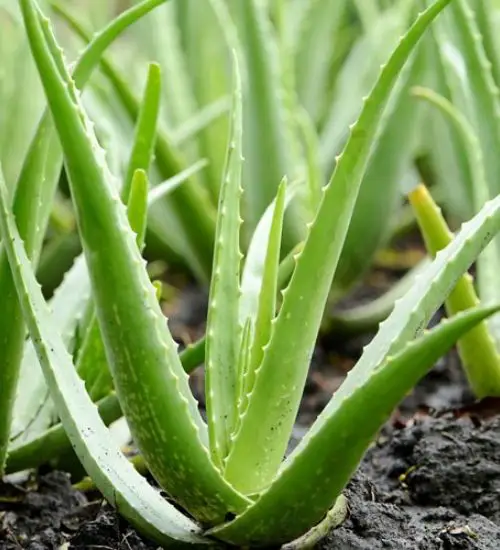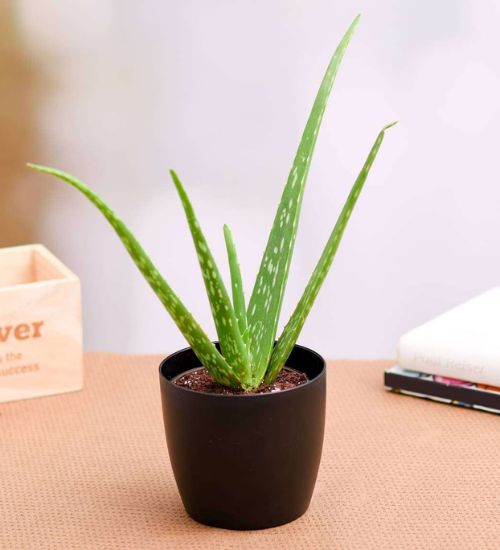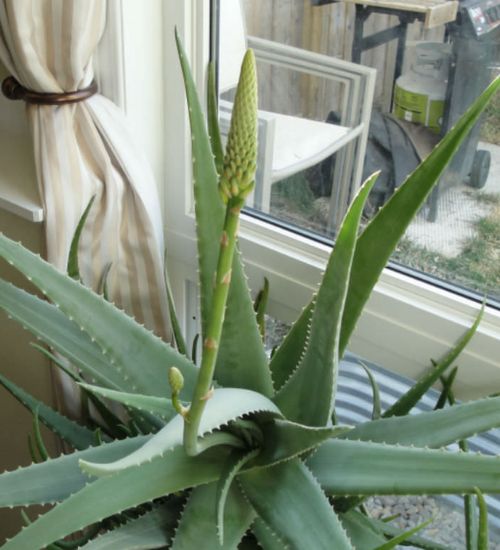Sun: full sun to partial shade
Water: Typical water needs for a succulent
Temperature: Zone 9a from 20° F to 25° F (-6.7 ° C to -3.9° C)
Winter Survival: Not cold hardy
Propagation: offsets
Flower: This succulent does not have flower
Toxic: Generally non-toxic to humans but can be toxic to animals.
Dormant: summer
Space Requirement: Indoors & Outdoors
Common Problems: Plants may rot if overwatered, pests
Where to buy Aloe Vera?
Basc Care for Aloe Vera
Watering
Regular watering period should be every 2 weeks
Can you water your succulent more than what its need? The answer is yes and no. In extreme conditions, you can water your plants more often when you notice the soil is completely dry.
Fertilizing
Only feed this succulent during its active growing seasons which means winter. Use the right fertilizer applied in the right amounts. Applying half-strength balanced fertilizer every month or so is recommended for optimal results.
Sun & Location Requirements for "Medicinal Aloe, Barbados Aloe"
Aloe Vera needs full sun to partial shade in order to thrive. While this variety needs plenty of bright light, it is important not to place it in direct sunlight for extended periods of time as this can cause damage or scorching to the leaves and stems. A shadier spot with indirect light could be just what "Medicinal Aloe, Barbados Aloe" needs.
In order to protect Aloe Vera from freezing temperatures, it is important to provide adequate insulation and drainage. A layer of mulch or gravel will help protect the roots by keeping them warm during cold weather. In addition, protection from wind and sun exposure can help reduce the chances of frost damage.
Aloe Vera also benefits from some indirect light throughout the day as well, so make sure you give it enough space to soak up light without becoming too exposed to heat.
Propagation
One way to propagate Aloe Vera is by offsets. Taking an offset from the mother plant and potting it into soil will give you a brand new succulent with minimal effort.
Toxicity

Aloe Vera is a popular plant, known for its beauty and ease of care. However, it can be toxic to animals due to the presence of saponins in its leaves. Humans are generally unaffected by these compounds, but it’s important to keep pets away from this succulent if you have any in your home.
Pests and Diseases
Aloe Vera can be affected common pests and diseases like most of the other succulents such as mealybugs.
If you do spot any of pest signs, you can treat your succulent using below methods.
- Mealybugs: quarantine, clean infected plants, soapy water.
Besides that, to prevent serious health issues from happening, keep your succulent in a well-ventilated area and check it regularly for any signs of pests or health problems.


